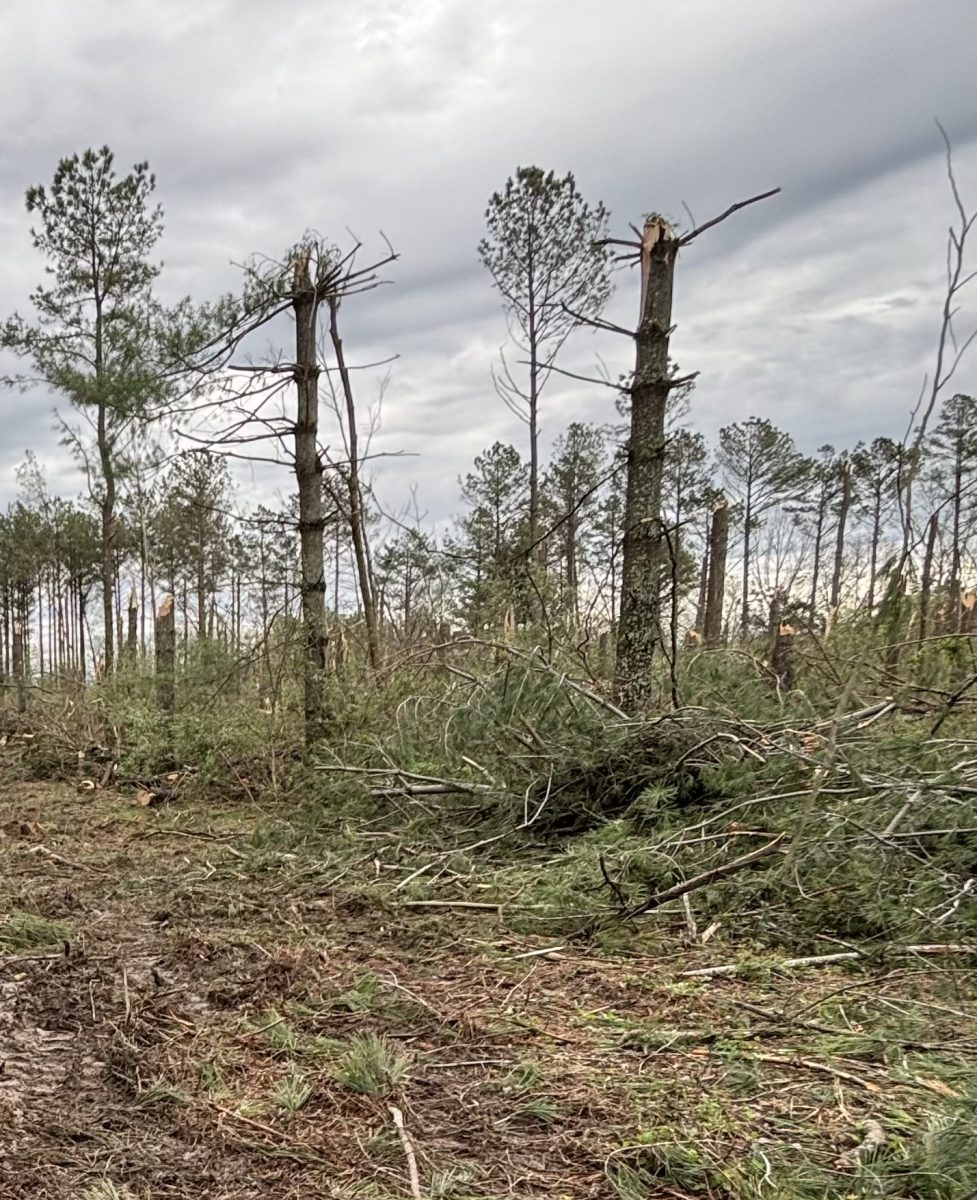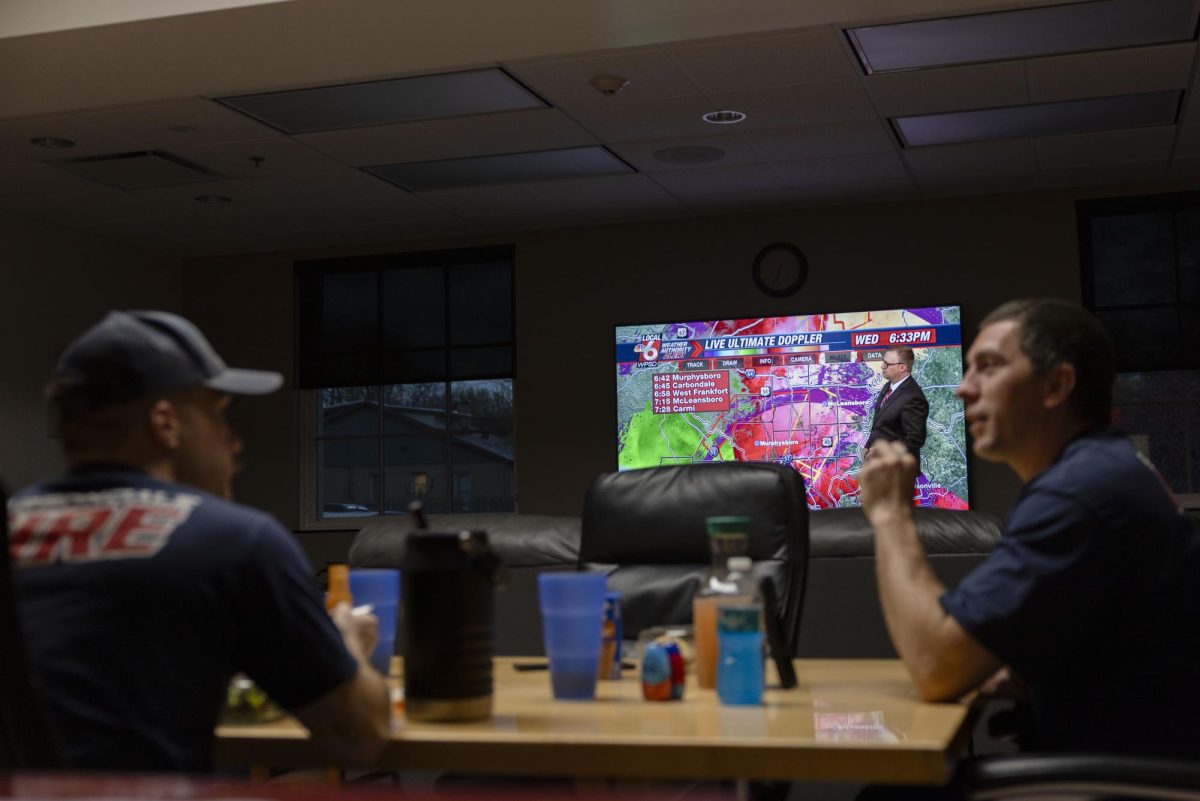Ameren deploys some new eyes in the sky
Neil Sizemore, of Carterville, inspects power lines Friday, Sept. 30, 2016, on Wall Street in Carbondale. Sizemore has worked for the Ameren power company for more than two decades. “I just needed a job,” said Sizemore, who also operates a farm in Carterville. “[It’s] a way to make a living.” The lineman said his father, two uncles and three brothers have worked in the profession. (Jacob Wiegand | @jawiegandphoto)
August 23, 2017
Ameren Illinois, which provides electrical and natural-gas service to most of the Champaign-Urbana area, is now using a fleet of drones to detect power outages, inspect power lines and poles and plan for construction projects.
Company officials demonstrated the equipment Tuesday at their Urbana operations center. Ameren has 36 drones and 18 pilots who have completed training. Several more are being trained.
A fully supplied drone and kit costs about $3,000, said Kyle Maxwell, Ameren’s superintendent of electrical operations and one of the licensed drone pilots.
Advertisement
“We’ve used them in several instances like up in LaSalle, where they’ve been used for pole-inspection work,” Maxwell said. “Beardstown was a great example where we used it in an inaccessible area in a swamp. Normally we’d put guys on the ground to walk it, but this was a real swamp so we would have had to get a boat in there to access it. Instead we used the drone, which took about five to 10 minutes to go out there to find our problem. Typically it would have taken four to six hours to get a boat in there and patrol the line.”
Riley Adams, Ameren’s manager of electric initiatives, said the drones heighten safety and save time.
“We intend to improve the safety for our employees. A lot of time, we’ll send a lot of people down to walk through an off-road section, and they can be exposed to a lot of hazards, like creeks and downed wires and whatever,” he said. “But with a drone we can have somebody up there looking at that, but they can watch the screen on the drone and see what the hazards are. It saves a lot of time for them.
“And the power gets back on more quickly for the customers too.”
There are limitations on the drones: They can’t be used after dark or within 5 miles of an airport control tower, which restricts their use in much of south Champaign. Their range is line of sight or about a mile, Adams said.
Drone operators undergo FAA test preparation at the aeronautical school at Southern Illinois University at Carbondale and also about of 20 hours of flying time.
“Companywide, our goal is saturation. You can’t just have one or two people at the company who have to travel to find out what’s wrong. So in our 45 or so operating centers we have at least one engineer or construction supervisor who has a drone and can operate it,” Adams said.
Advertisement*
In the future, he said, the drones may be fitted with advanced technology to detect natural-gas leaks or with infrared cameras to pinpoint “hot switches” at electrical substations.
___
(c)2017 The News-Gazette (Champaign, Ill.)
Visit The News-Gazette (Champaign, Ill.) at www.news-gazette.com
Distributed by Tribune Content Agency, LLC.
Advertisement



![Neil Sizemore, of Carterville, inspects power lines Friday, Sept. 30, 2016, on Wall Street in Carbondale. Sizemore has worked for the Ameren power company for more than two decades. “I just needed a job,” said Sizemore, who also operates a farm in Carterville. “[It’s] a way to make a living.” The lineman said his father, two uncles and three brothers have worked in the profession. (Jacob Wiegand | @jawiegandphoto)](https://dailyegyptian.com/wp-content/uploads/2016/10/093016_Lineman_WEB_JW-900x601.jpg)





